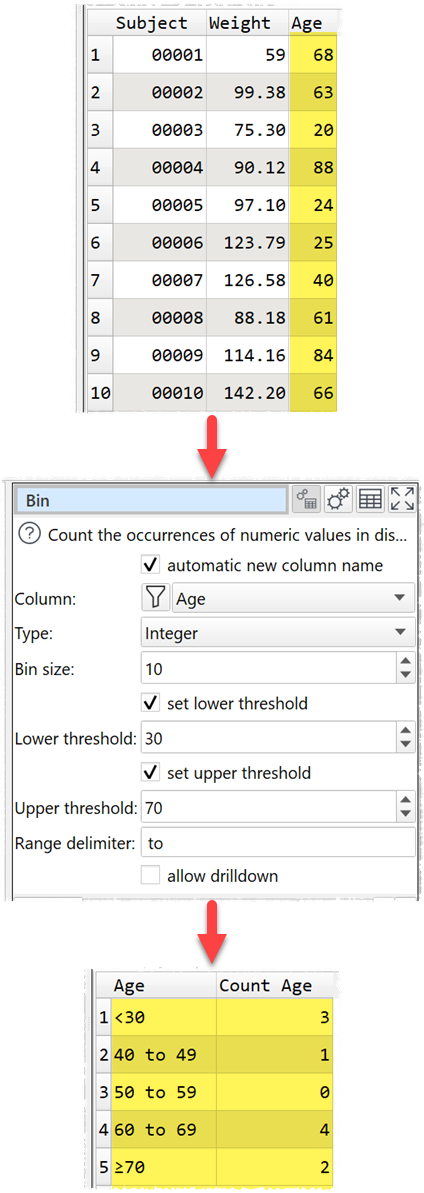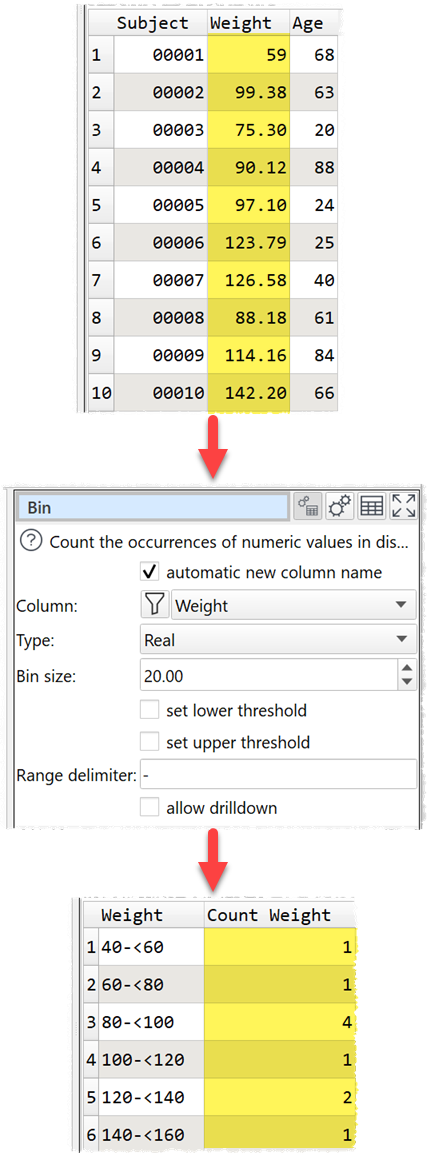Description
Count the occurrences of numeric values in discrete bins.
Examples
Count ages in 10 year bins with an upper and lower threshold:

Count weights in 20.0 kg bins:

Inputs
One.
Options
•Select the column you wish to count.
•Set Type depending on whether the column is real or integer numeric values.
•Check set lower threshold to set a bottom threshold for binning.
•Set Lower threshold to the lower threshold. Any value less than this will be placed in the first bin. Available only if set lower threshold is checked.
•Check set upper threshold to set an upper threshold for binning.
•Set Upper threshold to the upper threshold. Any value greater or equal to this will be placed in the last bin. Available only if set upper threshold is checked.
•Set Range delimiter for the text you wish to use as a delimiter in the bin labels.
•Check drilldown to allow drilldown.
Notes
•The output is limited to a maximum of 10,000 bins.
•Empty and non-numeric values are ignored.
•If Type is set to Integer then non-integer numeric values are ignored.
•If Type is set to Real it is possible that some values very close the bin boundaries could be counted in the wrong bin. This is due to the limited precision of real (floating point) numbers.
•Use Filter if you want to remove rows with a count of 0.